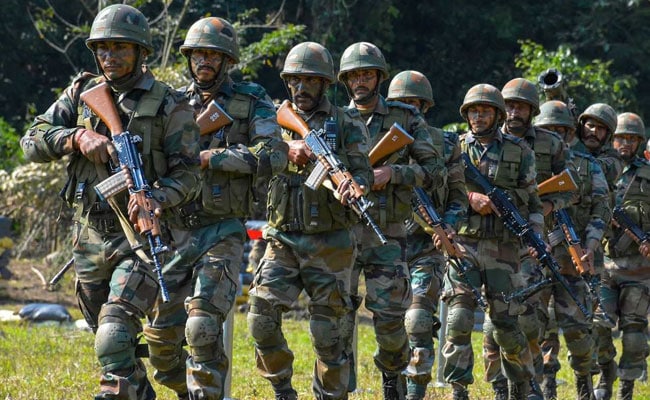In Radical Restructuring Plan, Army Brigadiers, Major Generals To Have Same Rank, Pay
The Indian Army plans to implement several significant steps "to meet futuristic challenges keeping budgetary prudence in mind". Within two years, the ranks of Brigadier and Major General in the Indian Army could be merged, a move that is part of the most comprehensive plan ever to re-organise the force. The plans would, however, need to be approved by the Defence Ministry before they can be implemented on the ground.

Many more officers will now be able to make it to the coveted Major General rank (Representational)
According to Army sources, "an officer commanding a brigade will be designated a Brigadier, but when that officer comes for a staff position, he will be designated a Major General and will not need to go through any Board." A brigade in the Indian Army is composed of approximately three thousand men and women.
In other words, there will be no separate assessment (or 'Board') of an officer to be designated Major General, a rank which will be granted entirely on the roles and responsibilities that are assigned. "The Brigadier and Major General level will be merged. Financially, they will be in the same grade" said senior officers to NDTV. The merger of the two ranks will also give 80 more officers in every batch the opportunity to make it to the much sought-after position of Major General. Presently, the pyramidal system of promotions within the army mean that very few among even the most deserving candidates rise beyond the rank of Colonel.
There are other significant steps that the army plans to implement "to meet futuristic challenges keeping budgetary prudence in mind". Army Headquarters in Delhi will now be primarily staffed by officers of the rank of Colonel and above while the majority of younger officers including Majors and Lieutenant Colonels will be posted out to increase the strength of field formations. In carrying out these changes, the authorised size of the Army Headquarters will come down from 1,450 to 1,250 officers. However, in an effort to draw on the best experience available, a hundred retired officers or specialists will be recruited as "re-employed officers."
Some new posts will also be created to deal with emerging threats while some others may be removed. The army will now have a Lieutenant General heading up the post of Director General (Information Warfare) while various branches of the army looking at the training of officers and jawans will be rationalised. The Vice Chief of the army, and the Director General (Training) will no longer be involved in the training process. Instead, the Army Training Command (ARTRAC) will be looking after this function in its entirety. A Major General will now be appointed the head of the Army's Vigilance Cell and will report directly to the Army Chief while the Lieutenant General who heads Financial Planning will report to the Vice Chief.
The changes being proposed in the army will be tested at select formations across the country through 2019 before a proposal is sent to the Defence Ministry to take a final call. Sources tell NDTV that the goal of the entire exercise is to "reduce duplication, ensure shorter decision making time, and work towards higher synergy in various verticals while ensuring greater accountability and more efficiency."
Fresh details have also emerged on the army plans to base its operations around the concept of Integrated Battle Groups (IBG). Sources have indicated to NDTV, that each IBG will be bigger than a brigade (3,000 men and women) but smaller than a division (9,000-10,000 men and women). Each IBG will be designed in a manner that it can be quickly deployed in the event of tension on the borders. Each IBG will have integral infantry, armour, artillery, reconnaissance and support units. Presently, it takes the army several weeks to re-position, stock and deploy major fighting formations which are expected to battle Pakistan or China. IBGs are meant to be "lean and agile groupings with elements of all arms all of which are trained together."
Between 1975 and 2016, there have been 13 studies looking at reorganising the army. The changes being proposed now are based on four separates studies which are taking place concurrently. These include 'Reorganisation and optimisation of the Indian Army,' 'Reorganisation of Army Headquarters, 'Officer Cadre Review' and 'Terms of Engagement of Junior Commissioned Officers and Other Ranks including minimum service for pension.' Each study is being supervised by a Lieutenant General.
No comments:
Post a Comment